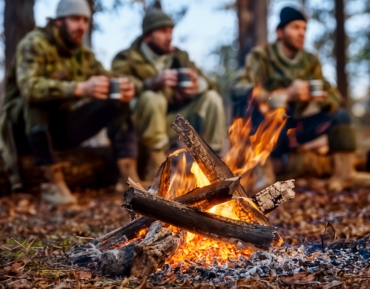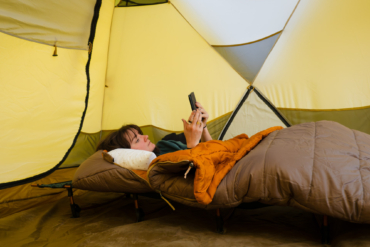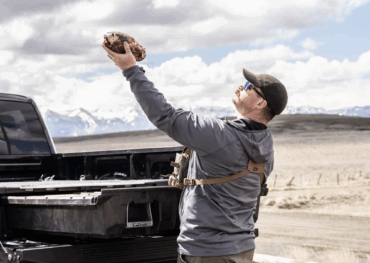Everybody’s carrying these days. This weekend, a bear in Minnesota’s Boundary Waters Canoe Area joined in the trend.
This summer, it seems like someone runs into a bear every time someone else gets on the internet. There are plenty of ways to practice bear safety in the wilderness; but what if the bear has a gun?
That was the bizarre scenario Minnesota Conservation Officer Mary Manning faced last week, courtesy of a strange report from a camper. The camper said that a bear had stolen his backpack, which contained “several delicious-smelling snacks” and a handgun, and ran off into the woods.
The “report of an armed bear in the BWCA” was a first for both Manning and her colleague in the Forest Service, who responded to the call. After searching the area, they located and recovered the partially shredded pack, numerous empty snack wrappers, and the firearm. It was described as “undamaged.”
All this leaves us with the question: What can we do to keep bears from carrying firearms in the wild?
Aftermath: A Word on Bear Safety
All parties involved in the incident emerged safely. And there is plenty you can do to limit the likelihood of a bear encounter, or limit the damage should one occur.
It’s no secret that dry conditions can increase interactions between humans and bears. Excessive heat impacts bears’ natural food sources. In turn, that can increase the chances of human-bear conflicts as the animals search for sustenance.
Andrew Tri, the Minnesota DNR’s bear project leader, said it “only takes one or two food rewards for a bear to remember that your home or cabin is a place where an easy meal can be had.”
Always use bear-proof containers wherever they’re required by the local jurisdiction. And anytime you’re in the backcountry during bear season, consider carrying bear spray from a proven manufacturer.
Backcountry bear savvy may save your life — and, in some strange cases, even limit unlicensed firearm carry.








